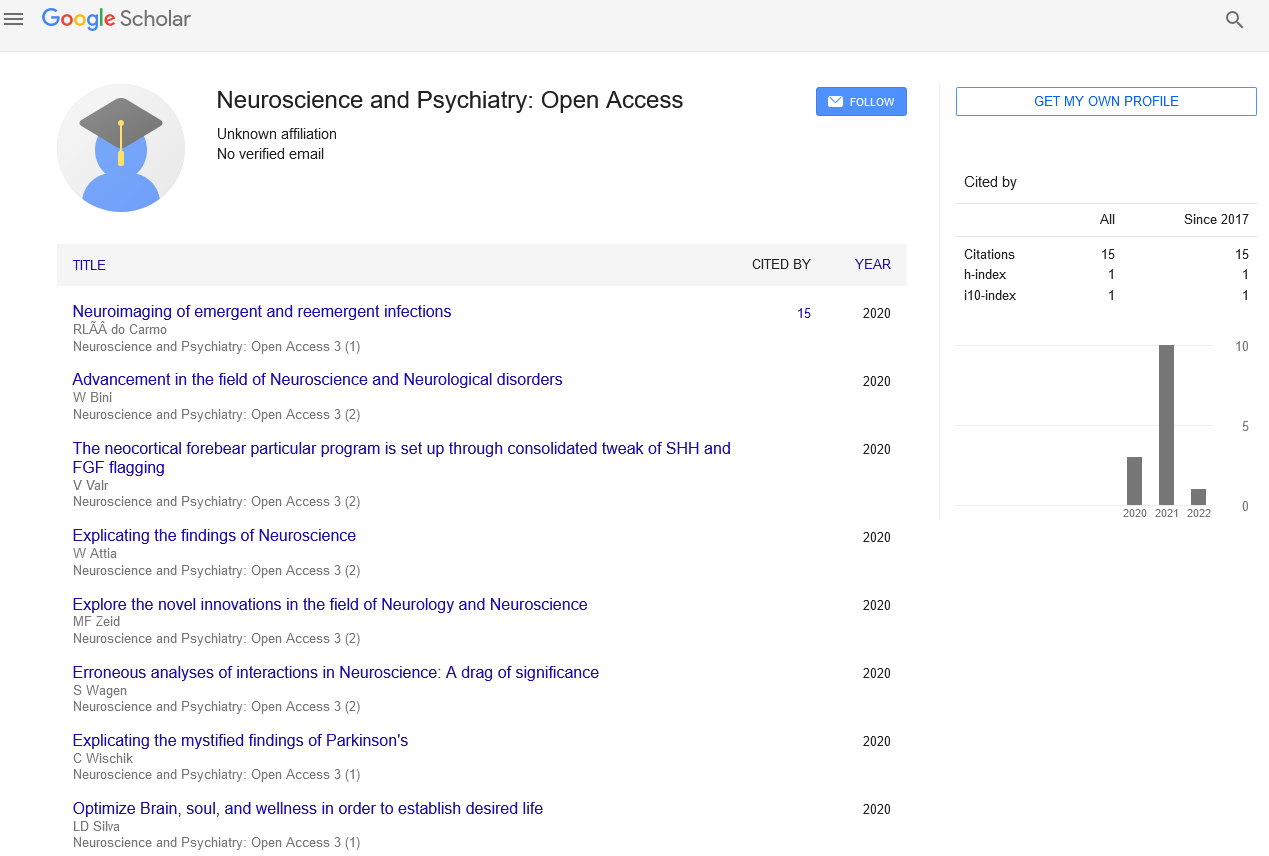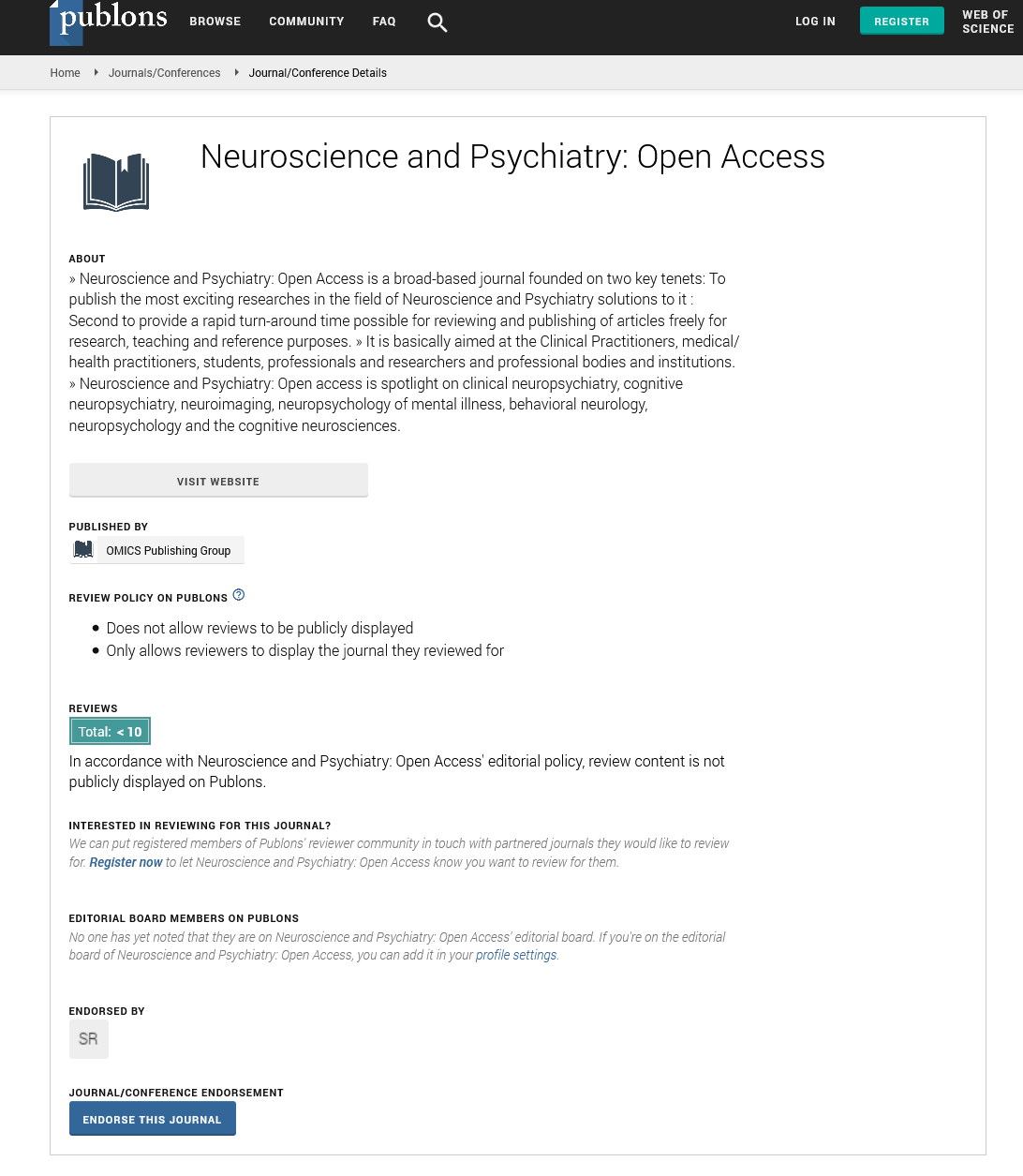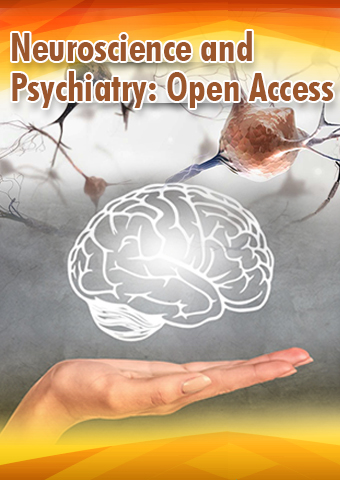Perspective - Neuroscience and Psychiatry: Open Access (2024) Volume 7, Issue 2
Behavioral Neuroscience: Exploring the Link between the Brain and Behavior
- Corresponding Author:
- Alessandro Miola
Department of Psychiatry and Behavioral Sciences, University of Minnesota, Minneapolis, United States
E-mail: alessandro.lg@gmail.com
Received: 09-02-2024, Manuscript No. NPOA-23-119625; Editor assigned: 13-02-2024, PreQC No. NPOA-23-119625 (PQ); Reviewed: 27-02-2024, QC No. NPOA-23-119625; Revised: 08-03-2024, Manuscript No. NPOA-23-119625 (R); Published: 15-03-2024, DOI: 10.47532/npoa.2024.7(2).177-178
Introduction
Behavioral neuroscience is a captivating and interdisciplinary field that delves into the intricate relationship between the brain and human behavior. This branch of science seeks to uncover the neurological basis of various behaviors, cognitive processes, and emotions. In this article, we will embark on a journey through the realm of behavioral neuroscience, examining its key components, research methods, and the profound insights it provides into the fundamental mechanisms underlying our actions and reactions.
Behavioral neuroscience, also known as biopsychology or psychobiology, is a field that investigates the neural mechanisms that underlie behavior, cognition, and emotion. It explores how the brain and the nervous system impact our thoughts, feelings, and actions. By unraveling the neural basis of behavior, researchers aim to provide a comprehensive understanding of the complex interplay between the brain and the mind.
Description
The building blocks: Neurons and neurotransmitters
At the heart of behavioral neuroscience lie neurons and neurotransmitters. Understanding these fundamental elements is essential to appreciate the intricacies of the field:
Neurons: Neurons are the specialized cells that make up the nervous system. They transmit and process information through electrical and chemical signals, forming the foundation of neural communication.
Neurotransmitters: Neurotransmitters are chemical messengers that facilitate communication between neurons. These molecules transmit signals across synapses, the junctions between neurons. The interaction of neurotransmitters with receptors on the receiving neuron plays a crucial role in determining behavior.
Key topics in behavioral neuroscience
Behavioral neuroscience encompasses a wide range of topics, each offering valuable insights into our behavior and mental processes. Some of these topics include:
Sensation and perception: This area investigates how our sensory organs and neural pathways allow us to perceive and interpret the world around us. It delves into topics like visual perception, auditory processing, and the sensation of touch.
Learning and memory: Behavioral neuroscience examines the neural processes behind learning and memory formation. It investigates how experiences lead to lasting changes in the brain’s structure and function.
Motivation and reward: This topic explores the neural basis of motivation, desire, and the brain’s reward system. It provides insight into why we pursue certain actions and behaviors.
Emotions and mood: The field delves into the neural underpinnings of emotions and mood regulation. It helps us understand how the brain generates and regulates emotional responses.
Neurodevelopment: Behavioral neuroscience also studies the development of the nervous system, including how the brain grows and matures from birth through adolescence and into adulthood.
Research methods in behavioral neuroscience
To explore the brain-behavior relationship, researchers employ a range of methods and technologies. These methods offer unique perspectives on neural function and behavior:
Neuroimaging: Techniques like functional Magnetic Resonance Imaging (fMRI) and Positron Emission Tomography (PET) allow researchers to visualize and monitor brain activity in real time. These methods provide insights into which brain regions are active during specific tasks or behaviors.
Electrophysiology: Electrophysiological methods, such as Electroencephalography (EEG) and single cell recording, measure the electrical activity of neurons. EEG is particularly useful for tracking brainwaves associated with different cognitive states.
Lesion studies: Lesion studies involve examining the impact of brain damage or removal of specific brain areas on behavior. By comparing the behavior of individuals with and without brain lesions, researchers can identify the role of specific brain regions in certain functions.
Animal research: Animal models, such as rodents and non-human primates, are used to study the neural mechanisms of behavior. These models allow researchers to investigate complex processes and manipulate specific brain regions to understand their function.
Genetic and molecular approaches: Genetic and molecular techniques, including gene knockout studies and ontogenetic, enable researchers to modify and control the genetic and cellular processes within the brain. These methods help uncover the genetic basis of behavior.
Clinical applications of behavioral neuroscience
Behavioral neuroscience has significant clinical applications, impacting fields such as psychology, psychiatry, and neurology:
Diagnosis and treatment: Insights from behavioral neuroscience contribute to the diagnosis and treatment of various neurological and psychiatric disorders. By understanding the neural mechanisms underlying these conditions, researchers develop more effective therapeutic interventions.
Pharmacology: The field aids in the development of psychotropic medications, which target neurotransmitter systems to treat conditions like depression, anxiety, and schizophrenia.
Rehabilitation: Behavioral neuroscience plays a role in designing rehabilitation programs for individuals recovering from brain injuries, helping them regain cognitive and motor functions.
Cognitive Behavioral Therapy (CBT): CBT, a widely used therapeutic approach for mental health conditions, is grounded in principles of behavioral neuroscience. It helps individuals reframe their thoughts and behaviors by recognizing and modifying maladaptive neural patterns.
Ethical considerations
The study of behavioral neuroscience also raises ethical concerns. As we deepen our understanding of the brain behavior relationship, issues related to privacy, informed consent, and the potential manipulation of behavior need to be addressed. Ethical guidelines and informed practices are essential to ensure responsible and ethical research in this field.
Conclusion
Behavioral neuroscience is an ever evolving field that offers profound insights into the intricate relationship between the brain and behavior. By exploring the neural basis of cognition, perception, emotion, and motivation, researchers continue to advance our understanding of human behavior and the underlying neural mechanisms.
As behavioral neuroscience progresses, it has the potential to lead to breakthroughs in the diagnosis and treatment of neurological and psychiatric disorders, improve therapeutic interventions, and enhance our comprehension of the intricate workings of the brain. It is a field that not only enriches our knowledge but also holds the promise of transformative applications in various aspects of human life, from healthcare to education and beyond.


